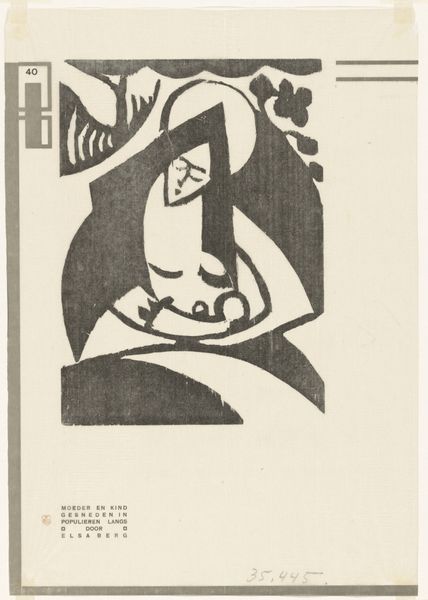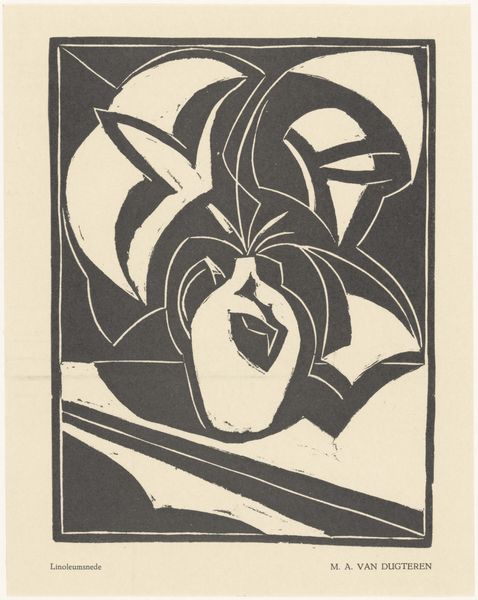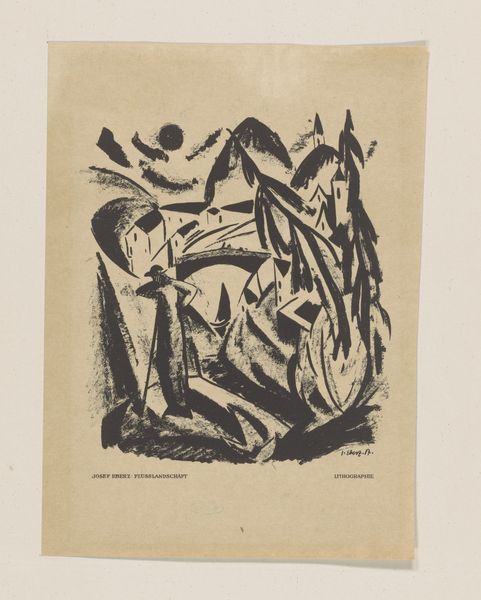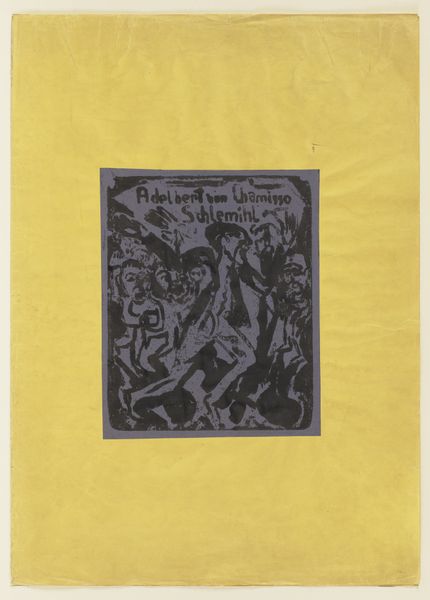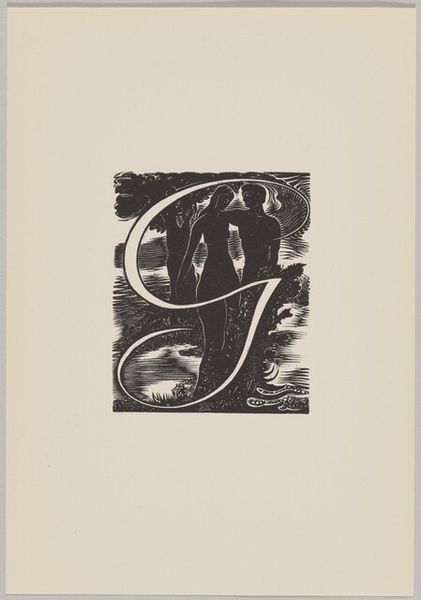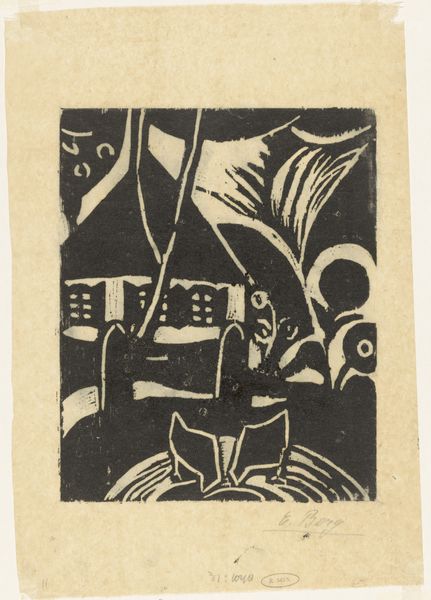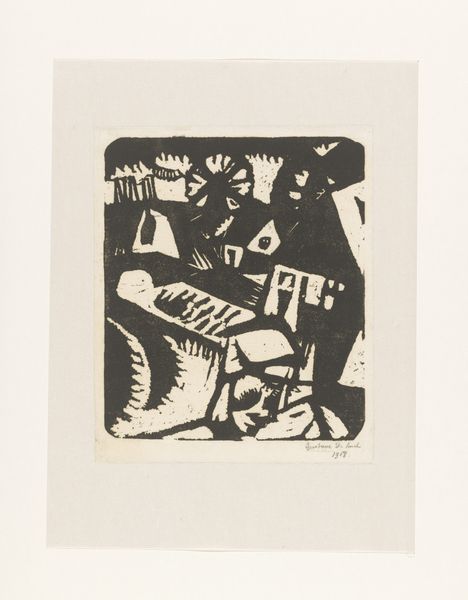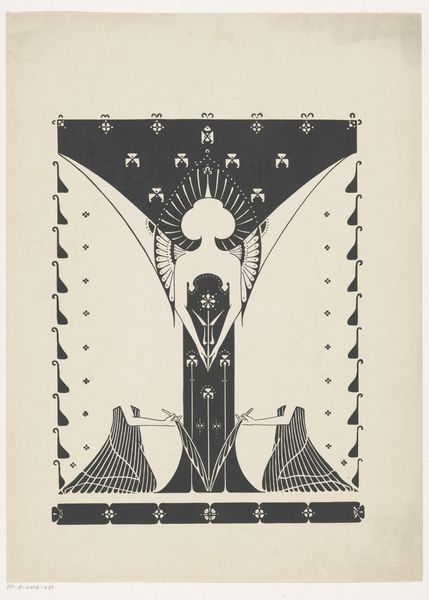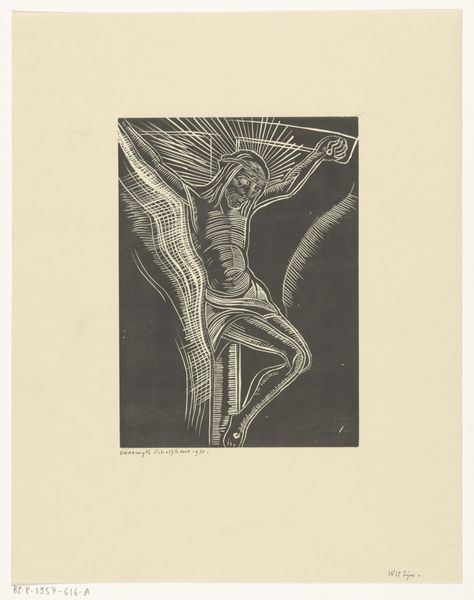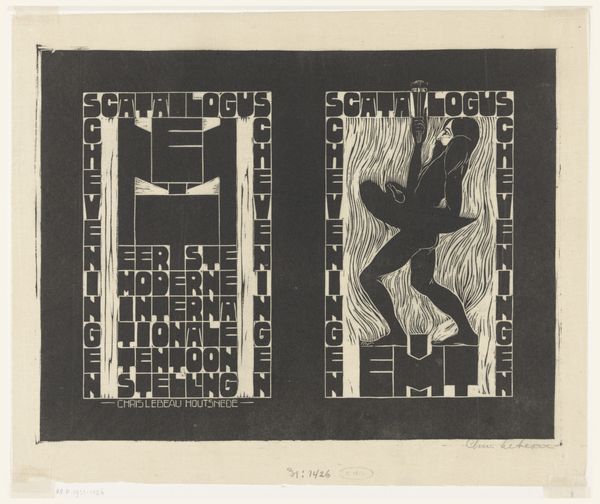
graphic-art, print, woodcut
#
graphic-art
#
narrative-art
# print
#
old engraving style
#
figuration
#
woodcut
#
monochrome
Dimensions: height 209 mm, width 161 mm
Copyright: Rijks Museum: Open Domain
Curator: This is a 1946 woodcut by M. Bosch titled "Nieuwjaarswens voor 1947 van Carla, Mária en Phons Schellart," or "New Year's Wish for 1947 from Carla, Maria and Phons Schellart." It's a striking monochrome print. Editor: Yes, the contrast is really eye-catching. It almost feels like looking at a shadow puppet performance, all dramatic blacks and whites. What grabs me immediately is the handmade quality; you can see the distinct marks of the cutting tool. Curator: The graphic quality is wonderful. Made so soon after the war, this piece offers a personal, almost intimate look at how families were navigating the postwar period in the Netherlands. The inscription quotes the poet Villon – "But where are the snows of yesteryear?" Editor: Fascinating choice. I am drawn to that lettering, how it integrates into the overall image but it also seems almost naive in its form. Looking at it as a woodcut, you start to appreciate the labor involved, each cut a physical act, almost a ritual. What was available material-wise right after the war? The print speaks to making-do. Curator: Woodcuts were definitely more accessible. Artists like Bosch, likely reflecting broader societal trends, moved away from oil paints to graphic media because materials were easier to source, but I do wonder about the artistic intention in depicting children specifically. Editor: Perhaps a symbol of hope and renewal? And what is she gazing toward – the snow, the new year? The limited color palette—just black ink on paper—underscores the austerity and uncertainty of the time. What were the working conditions for the artist like in that time and place? I find the social context to be particularly resonant. Curator: Exactly. While many artists engaged in overt political statements, this piece offers a look at postwar social fabric. What’s interesting here is that despite the potential hardship, Bosch focuses on a simple, hopeful sentiment: the family. It suggests a desire for stability and normalcy in a world that had been irrevocably altered by conflict. Editor: A New Year's wish materialized through laborious handcraft. You start to wonder about Maria, Phons, and Carla, their individual experiences, and this beautiful handmade object as evidence of care. A testament to the enduring power of human connection, really. Curator: Yes, and it adds depth to how we consider art’s function within social structures; not as detached objects but as pieces with direct relevance and connection. Editor: I agree. Focusing on process unveils such potent details – especially where this woodcut meets post-war life and material circumstance.
Comments
No comments
Be the first to comment and join the conversation on the ultimate creative platform.

